Quadriceps Stretching after Knee Surgery: A tweak to the technique
Obtaining full knee flexion after a knee surgery or knee injury can be difficult for some. The transition from passive knee flexion in seated (my preferred) or supine (not preferred!) can be a challenge for the physical therapist, once they are starting to work on quadriceps stretching. This blog post serves to help modify the prone quadriceps stretching technique after a knee surgery. The goal is to better localize the stretch to the muscle and not cause further pain and discomfort to the patient.
In the past, I’ve talked about restoring knee extension after surgery, particularly after an ACL reconstruction. If you missed that blog post, you can read it here here and here. You might say I have a slight obsession with talking about ROM after surgeries.
For a common surgery like an ACL reconstruction, I often see people present to me without full ROM. That’s why I continue to discuss techniques that can help other clinicians and patients restore their ROM before it’s too late.
Why is full ROM important after knee surgery?
Well, we think there’s a pretty close link between long-term issues and not restoring knee ROM.
In Shelbourne’s article in AJSM 2012, he states that “abnormal knee flexion at early follow-up, abnormal knee extension at final follow-up, abnormal knee flexion at final follow-up, partial medial meniscectomy, and articular cartilage damage were significant factors related to the presence of osteoarthritis on radiographs.”
He also went on to say that you had a 2x increased risk of knee arthritis if you don’t get full ROM. This was similar to having had a meniscectomy surgery or articular cartilage loss.
For such a simple concept, we PT’s can really affect the long-term outcomes for our patients if we don’t get full knee ROM. So why are people still struggling years after their knee surgery? I don’t know… but it’s troubling and definitely avoidable in most patients.
Check out this study from the Journal of Athletic Training in 2015. They discuss how a patient’s flexion ROM can help significantly improve their IKDC scores (functional score) during the 1st 2 months post-op.
Simple Modification to Prone Quadriceps Stretching
I began to think about this topic when I was reading a Facebook post in one of the PT groups and it made me think. We always talk about knee extension and there is some research that discusses the importance of safely obtaining knee extension ROM. I put this study in a recent Instagram post and got some pretty good response.
It seems that whenever I talk about knee ROM after a surgery, people’s ears perk up. Let’s go to the video and talk about a simple technique I use to improve knee flexion ROM after a surgery or injury.
As you can see, a small tweak to your technique can really make a big difference. Again, I’m not sure what exactly is going on. It seems like I’m adjusting the position of the tibia just slightly and that is influencing the location of the stretch toward the quads. If I take my hand away, then they feel the pain and pressure in the front of the knee and it does not feel good.
Slow and Steady Knee Flexion
For the record, I’m not one of those PT’s that likes to be super aggressive and push my patients to tears. I’ve inherited those patients from other PT’s and that technique often fails.
When I talk about improving prone knee flexion, I’m talking about improving quadriceps flexibility and length. Remember, if you have someone lie on their stomach and you try to flex their knee, you’re either limited by pain, joint capsule or the rectus femoris (2-joint muscle.)
It’s not until I think the knee has reached a period of calm that I begin pushing into prone flexion. I’m not using this to crank and get 5 more degrees for my documentation. I’m using this at an appropriate time to improve muscle flexibility and maybe get that end range of motion that is so important.
Remember, obtaining full knee ROM is a process, but a very important process. it’s not going to happen quickly, especially if you’re wicked aggressive (my Boston comes out when I get fired up!!)
Try it for yourself
So this week, try this technique out on one of your clients who may be struggling with regaining their knee flexion ROM. I’m curious to know what you think and if it works for you. As we’ve seen, it’s very important to get that full ROM back after a surgery and this is one modification that I think can help you immediately.

If you want to learn more about how I treat ACL’s and other knee injuries, then you can check out our all online knee seminar. If interested, check it out at www.onlinekneeseminar.com and let me know what you think. We cover the anatomy, rehab prescription, ACL, knee replacements and patellofemoral issues both non-operative treatment and post-operative treatment. This is an awesome course if you’re interested in learning more about rehabilitating the knee joint. And if you’re a PT, there’s a good chance you can get CEU’s as well.



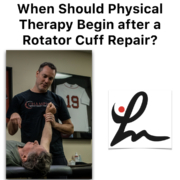 2019
2019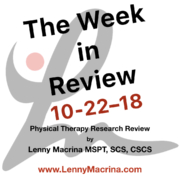
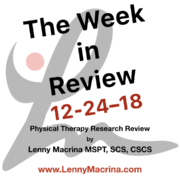
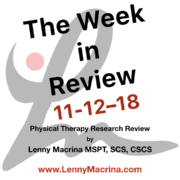
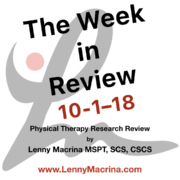


Good stuff Lenny. I use that technique as well. I even do the same thing in sitting on the edge of a table with a towel roll and then apply the same hand position to the tibia/gastro-soleus as they flex; much the same way you would with MWM.
Thanks Pat… yeah seems to help people a lot.
Thanks Lenny. Does this work for TKA?
I typically don’t put my TKA’s in prime, as I mentioned in the blog post. Their concern is ROM, strengthening and balance. I’m not concerned with 140 degrees of motion and good quadriceps flexibility. Different worlds, in my opinion. Thanks for asking…